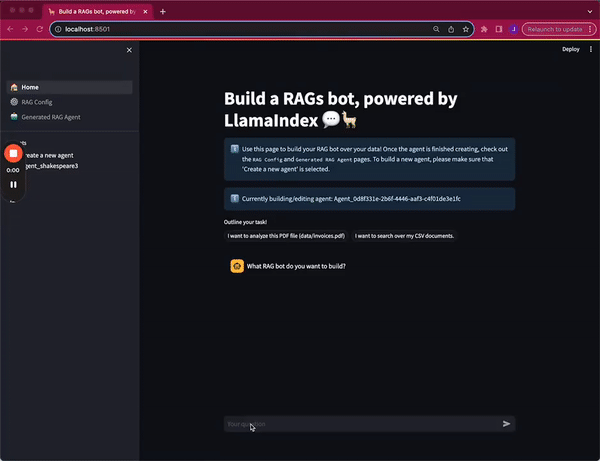Meet RAGs: A Streamlit App that Lets You Create a RAG Pipeline from a Data Source Using Natural Language
GPTs stand out in artificial intelligence regarding NLP tasks. Nevertheless, pipelines built and deployed using GPT can be lengthy and intricate. The role of RAGs is to be seen here.
RAGs is an app developed by Streamlit that streamlines the process of creating and deploying GPT pipelines. It offers an intuitive interface that lets users specify their jobs and desired RAG system parameters. The pipeline is then automatically deployed after RAGs generate the required code.
The best part is that RAG has a completely new version RAGs v2. RAGs v2 represents a significant upgrade from its initial launch, offering a more versatile and user-friendly experience for building and customizing ChatGPTs. Users can now effortlessly create, save, and manage multiple RAG pipelines, each customizable with different data sets or system prompts. Additionally, there’s an option to delete unused pipelines, enhancing overall usability. The development quality has been improved with the integration of linting and CI tools. RAGs v2 also supports a wide range of Large Language Models (LLMs) for both constructing and utilizing within each RAG pipeline. Moreover, it has the capability to load files or web pages, further extending its functionality. A detailed explanatory video is available for easy setup and use of this advanced tool.
Here are the three main sections of the app:
- Instructing the “builder agent” to construct a RAG pipeline is done on the home page.
- You may find the RAG settings created by the “builder agent” mentioned in the RAG Config section here. You can freely update or change the generated settings in this area, which features a user interface.
- The RAG agent is generated using a regular chatbot interface; you can ask it questions based on your data.
How to use RAGs
Here are the simple methods to use RAGs:
Run RAGs: To run RAGs, run the following command:
pip install ragsAfter you’ve installed RAGs, you can execute the following command to construct an RAG pipeline:
rags create-pipelineThe Streamlit app will launch, allowing you to choose the job and the desired RAG system specifications.
Execute the following command to deploy your RAG pipeline once you have finished creating it:
rags deployYou can launch your RAG pipeline on a web server with this command. Once your RAG pipeline is up and running, you can use the following command to query it:
rags queryIn summary
RAGs is a robust platform for easily creating and deploying pipelines based on GPT. Anyone interested in solving NLP challenges with GPTs will find it to be an invaluable tool.
Check out the Github. All credit for this research goes to the researchers of this project. Also, don’t forget to join our 33k+ ML SubReddit, 41k+ Facebook Community, Discord Channel, and Email Newsletter, where we share the latest AI research news, cool AI projects, and more.
If you like our work, you will love our newsletter..
![]()
Dhanshree Shenwai is a Computer Science Engineer and has a good experience in FinTech companies covering Financial, Cards & Payments and Banking domain with keen interest in applications of AI. She is enthusiastic about exploring new technologies and advancements in today’s evolving world making everyone’s life easy.
Credit: Source link


Comments are closed.